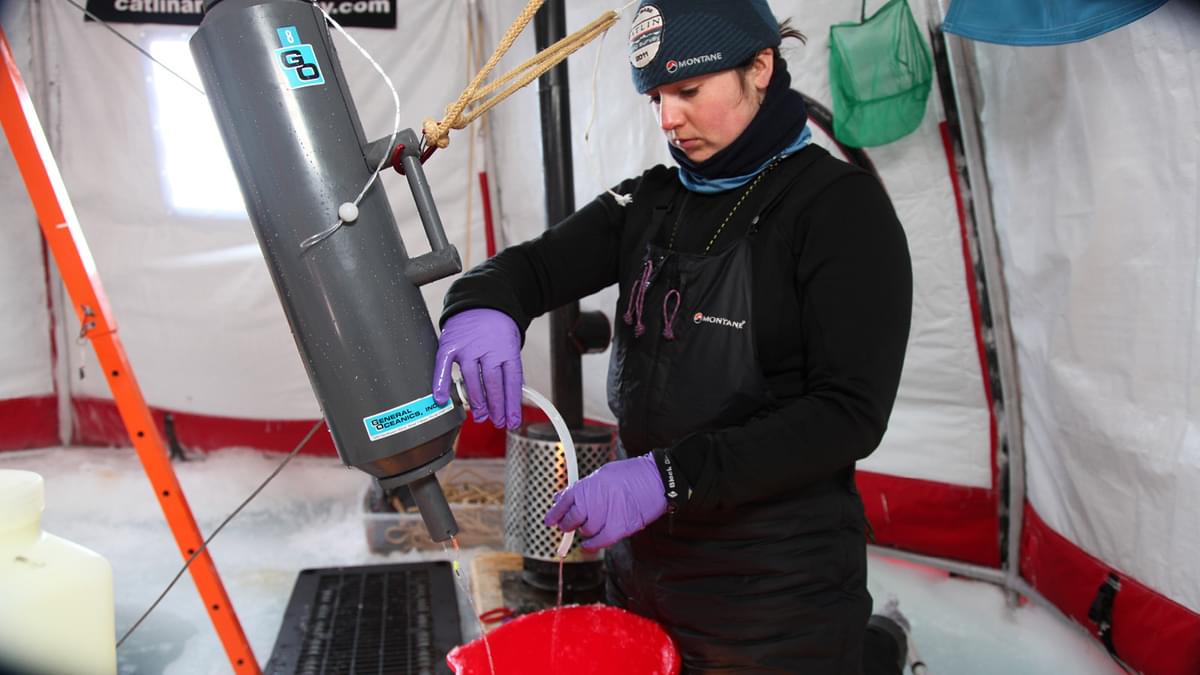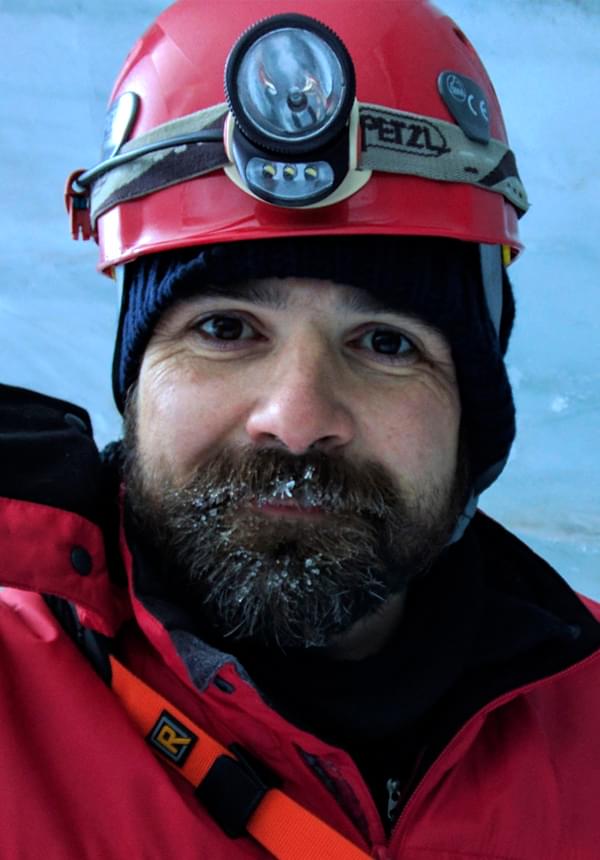
Ocean acidification
This fun investigation aims to show how water becomes more acidic when carbon dioxide is bubbled through it. It demonstrates the link between carbon dioxide in the atmosphere and a process called ocean acidification, a change in the pH or acidity of the ocean. Students will also observe over time the effects of acid (in this case, vinegar) on shells.
Preparation
Arrange students into small groups, and organise all resources needed for the experiments. A list for resources needed for Ocean acidification in a cup experiment can be found here and a list of resources needed for the Dissolving ‘coral’ and ‘shells’ in vinegar experiment found here.
Session Steps
1. Introduction (5 mins)
Jamie will open the session with a welcome and brief introduction to the expedition and any shout-outs to registered classes.
Jamie will then explain that this investigation incorporates two activities, Ocean acidification in a cup and Dissolving ‘coral’ and ‘shells’ in vinegar. Use the hyperlinks above to find out what resources you need for each activity.
2. Subject knowledge (5 mins)
Jamie will speak about what ocean acidification is and how we can simulate an extreme version of ocean acidification right in the classroom. There will be a brief introduction to acids and alkalis and how the pH scale can be useful for comparing the acidity of liquids.
During this time students to get into their allocated groups and set up their experiments.
3. Activity time (20 mins)
Jamie will demonstrate how to set-up models of the ocean to demonstrate Ocean acidification in a cup. Jamie will ask your students to predict how the colour of the indicator may change, write your answers on the live chat.
Jamie will begin the experiment. For further support the steps are found here.
Jamie will discuss further about why ocean acidification is problematic. Then he will focus on how acid can react with calcium carbonate in shells, which is problematic for survival and growth of organisms like clams and scallops.
The next step is to set-up the activity to observe dissolving shells, or chalk, in an acid (in this case, vinegar). Join in the investigation live. For further support the steps are found here.
Jamie will further discuss the significance of ocean acidification, extending the discussion to what happens to the rest of the food web if organisms such as clams and scallops were unable to grow and survive.
4. Q&A and conclusion (15 mins)
After completing the activity Jamie will be able to answer pre-submitted questions and take part in the live chat. At the end of the broadcast, Jamie will suggest some other activities you might like to try and what's coming up in the rest of Arctic Live 2019.
Speakers

Jamie Buchanan-Dunlop
Executive Director, Encounter Edu
Brought to you by



With the support of




Ocean acidification
This fun investigation aims to show how water becomes more acidic when carbon dioxide is bubbled through it. It demonstrates the link between carbon dioxide in the atmosphere and a process called ocean acidification, a change in the pH or acidity of the ocean. Students will also observe over time the effects of acid (in this case, vinegar) on shells.
Preparation
Arrange students into small groups, and organise all resources needed for the experiments. A list for resources needed for Ocean acidification in a cup experiment can be found here and a list of resources needed for the Dissolving ‘coral’ and ‘shells’ in vinegar experiment found here.
Session Steps
1. Introduction (5 mins)
Jamie will open the session with a welcome and brief introduction to the expedition and any shout-outs to registered classes.
Jamie will then explain that this investigation incorporates two activities, Ocean acidification in a cup and Dissolving ‘coral’ and ‘shells’ in vinegar. Use the hyperlinks above to find out what resources you need for each activity.
2. Subject knowledge (5 mins)
Jamie will speak about what ocean acidification is and how we can simulate an extreme version of ocean acidification right in the classroom. There will be a brief introduction to acids and alkalis and how the pH scale can be useful for comparing the acidity of liquids.
During this time students to get into their allocated groups and set up their experiments.
3. Activity time (20 mins)
Jamie will demonstrate how to set-up models of the ocean to demonstrate Ocean acidification in a cup. Jamie will ask your students to predict how the colour of the indicator may change, write your answers on the live chat.
Jamie will begin the experiment. For further support the steps are found here.
Jamie will discuss further about why ocean acidification is problematic. Then he will focus on how acid can react with calcium carbonate in shells, which is problematic for survival and growth of organisms like clams and scallops.
The next step is to set-up the activity to observe dissolving shells, or chalk, in an acid (in this case, vinegar). Join in the investigation live. For further support the steps are found here.
Jamie will further discuss the significance of ocean acidification, extending the discussion to what happens to the rest of the food web if organisms such as clams and scallops were unable to grow and survive.
4. Q&A and conclusion (15 mins)
After completing the activity Jamie will be able to answer pre-submitted questions and take part in the live chat. At the end of the broadcast, Jamie will suggest some other activities you might like to try and what's coming up in the rest of Arctic Live 2019.
Speakers

Jamie Buchanan-Dunlop
Executive Director, Encounter Edu
Brought to you by



With the support of





